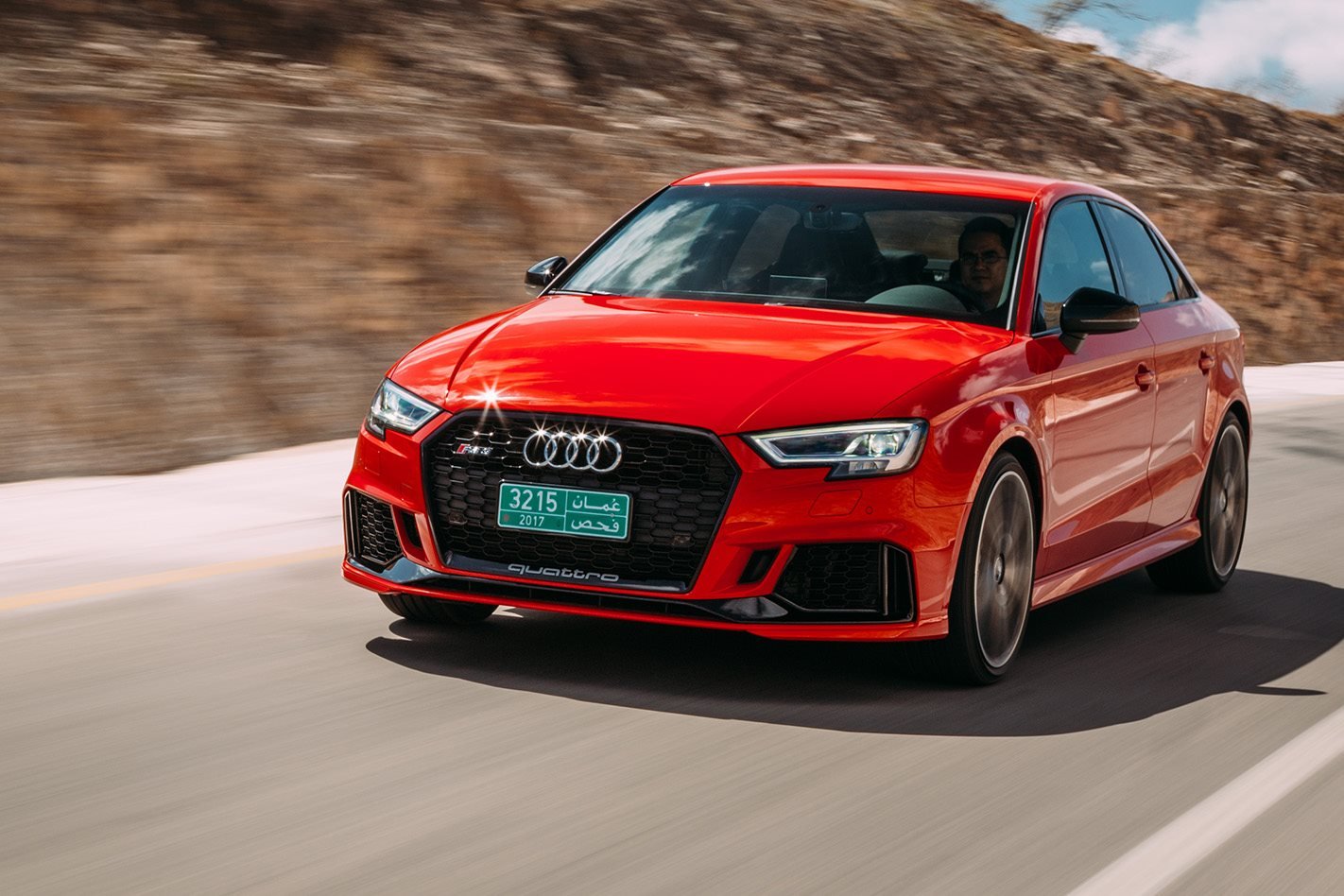
Audi’s five-cylinder hot hatch hero now has a sedan-bodied sibling – but that’s not all that’s new about the 2017 Audi RS3.
There has been a range of mechanical and equipment updates applied to the A3-based performance car, encompassing everything from a slick new infotainment system to an all-new – and lighter – engine.
Due to launch in Australia in June, we travelled to the Arabian Sultanate of Oman to get an early taste of the updated RS3 – and we liked what we found.
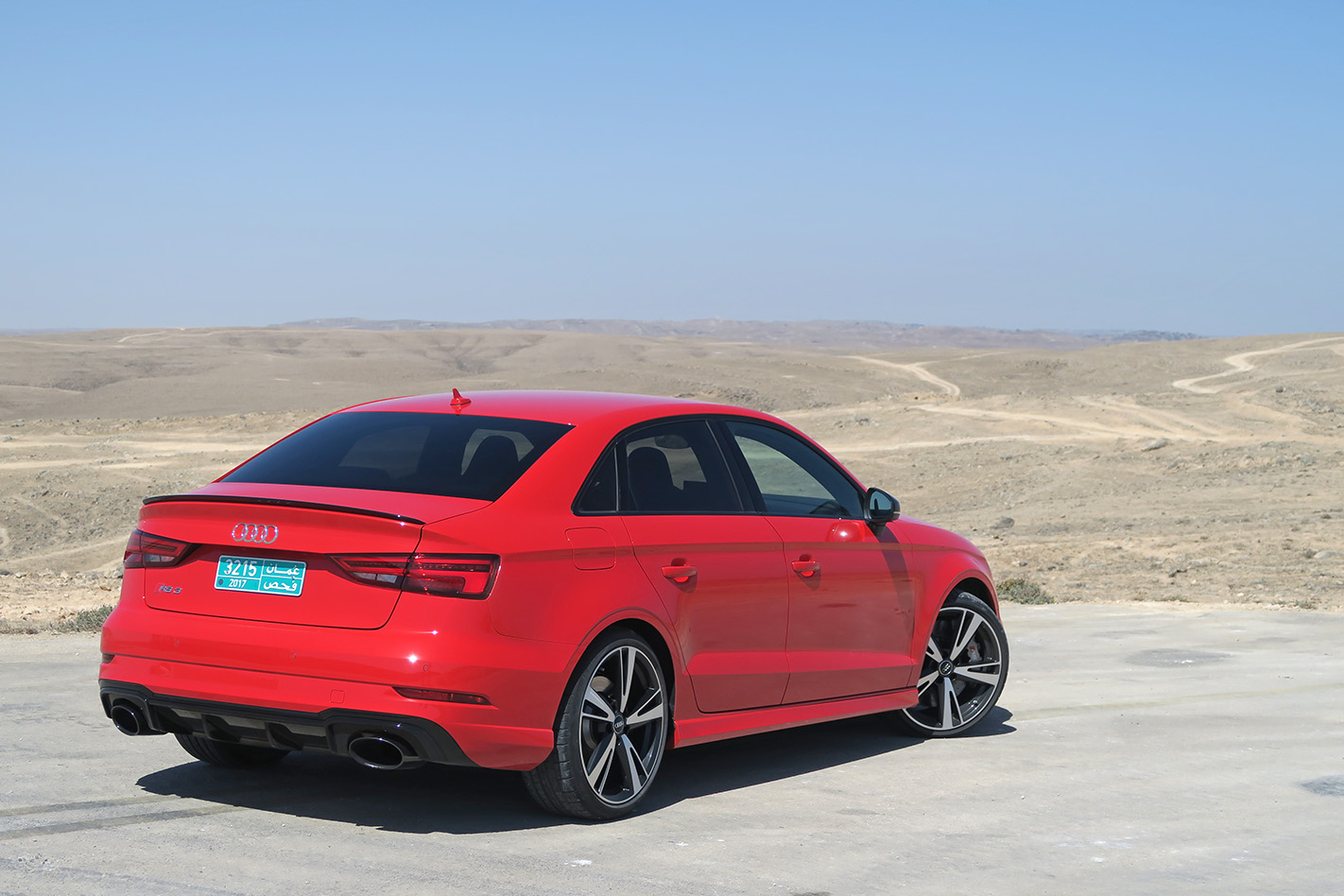
STRENGTHS
- The 2017 RS3 is still powered by a 2.5-litre turbocharged petrol inline five, but it’s been comprehensively reworked with a lightweight aluminium block replacing the old and heavy cast iron unit. Other enhancements further drop the RS3’s weight, with the end result being an engine that’s 26kg lighter than before. Less weight equals less power wasted in getting the car moving, and better performance overall.
- And not only is it lighter, but the RS3’s new engine also has 24kW more power and 15Nm more torque than before. It does its best work about 2600rpm, but give the turbo enough time to spool and it’ll generate its maximum torque output from as low as 1700rpm. It’s stupendously tractable and fires the RS3 to 100km/h in just 4.1 seconds
- The engine may be a radical redesign of the outgoing Audi inline-five, but one thing that hasn’t been changed is the classic and unmistakeable five-cylinder thrum. By implementing a unique 1-2-4-5-3 firing order, the RS3’s exhaust note is its signature.
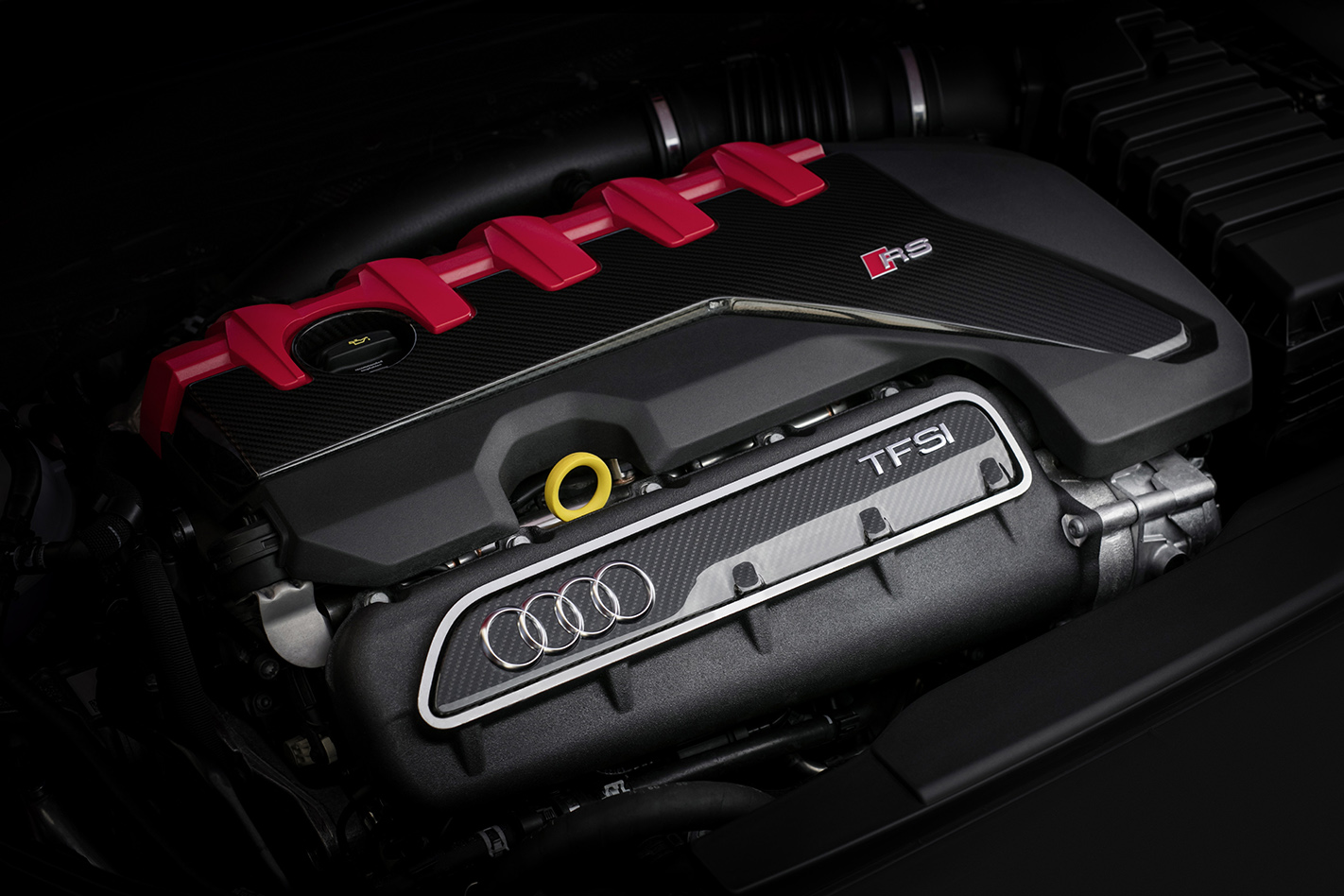
- Much of the interior is carry-over from the pre-update RS3, but the most notable exception is the presence of Audi’s latest-generation reconfigurable electronic instrument panel. Dubbed “Virtual Cockpit” by the brand, it can display a huge array of information right in front of the driver, including sat-nav maps, phone and media, as well as a performance-oriented screen with a large central tachometer flanked by other engine readouts.
- Though the interior will be largely familiar territory to anyone who’s been in the outgoing RS3, the 2017 model still has one of the better cabins in its segment when it comes to design and quality.
- Handling has been enhanced by the RS3’s lighter nose, and when specced with the wider front tyre package (255-section rubber instead of 235-section), direction changes are pretty snappy. With the optional lightweight carbon-ceramic brake package, turn-in response is even sharper.
- It’s finally a fun choice. Rather than merely being fast, the updated RS3 can now do flamboyant sportscar things like powerslides and drifting, provided you have the skill to exploit its new abilities. The outgoing model on the other hand was a bit of a lead-tipped arrow.
- The sedan bodystyle is an absolute winner from an aesthetic point of view, with beautiful proportions and a more mature posture than the RS3 Sportback. The best part is opting for it won’t cost you anything in performance – its 0-100km/h and fuel consumption numbers are identical to the hatch.
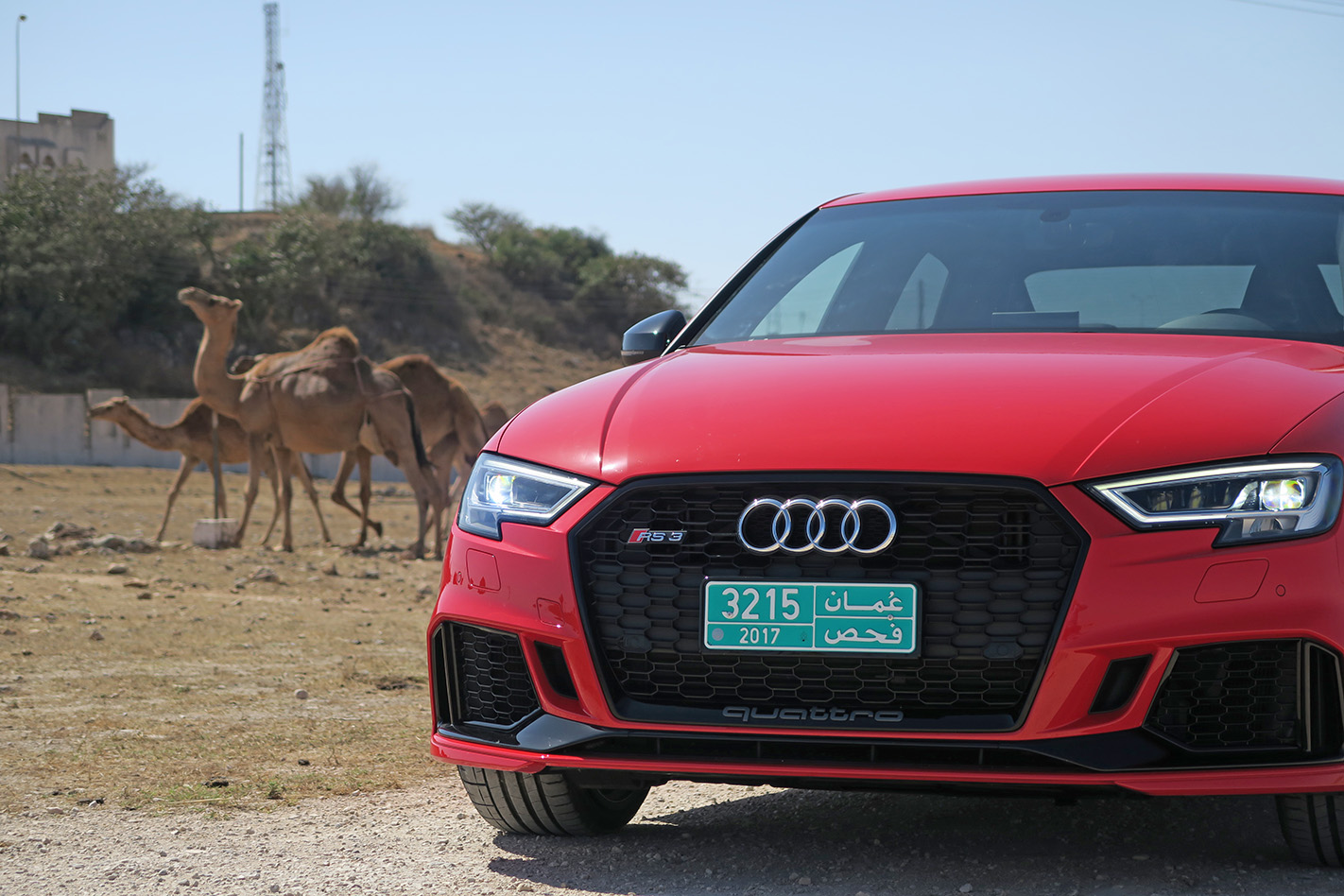
WEAKNESSES
- Though it has half a litre more displacement than its key rival the Mercedes-AMG CLA45, the RS3’s engine doesn’t feel a great deal more responsive than that car. If you’re caught below 2600rpm it can feel like the turbo takes a while to spool up.
- To experience the RS3 at its best, you’ll need to spend a bit of money on some optional extras. The wider front wheel package is a worthy box to tick, as it gives the front end more grip and enhances the car’s handling. The ultra-lightweight carbon brakes also help, but will cost you a five-figure sum.
- No manual. Keen drivers may lament the loss of a three-pedal manual option, but to be fair to Audi the RS3’s performance is extreme enough to render a traditional manual transmission a liability if you’re trying to drive fast.
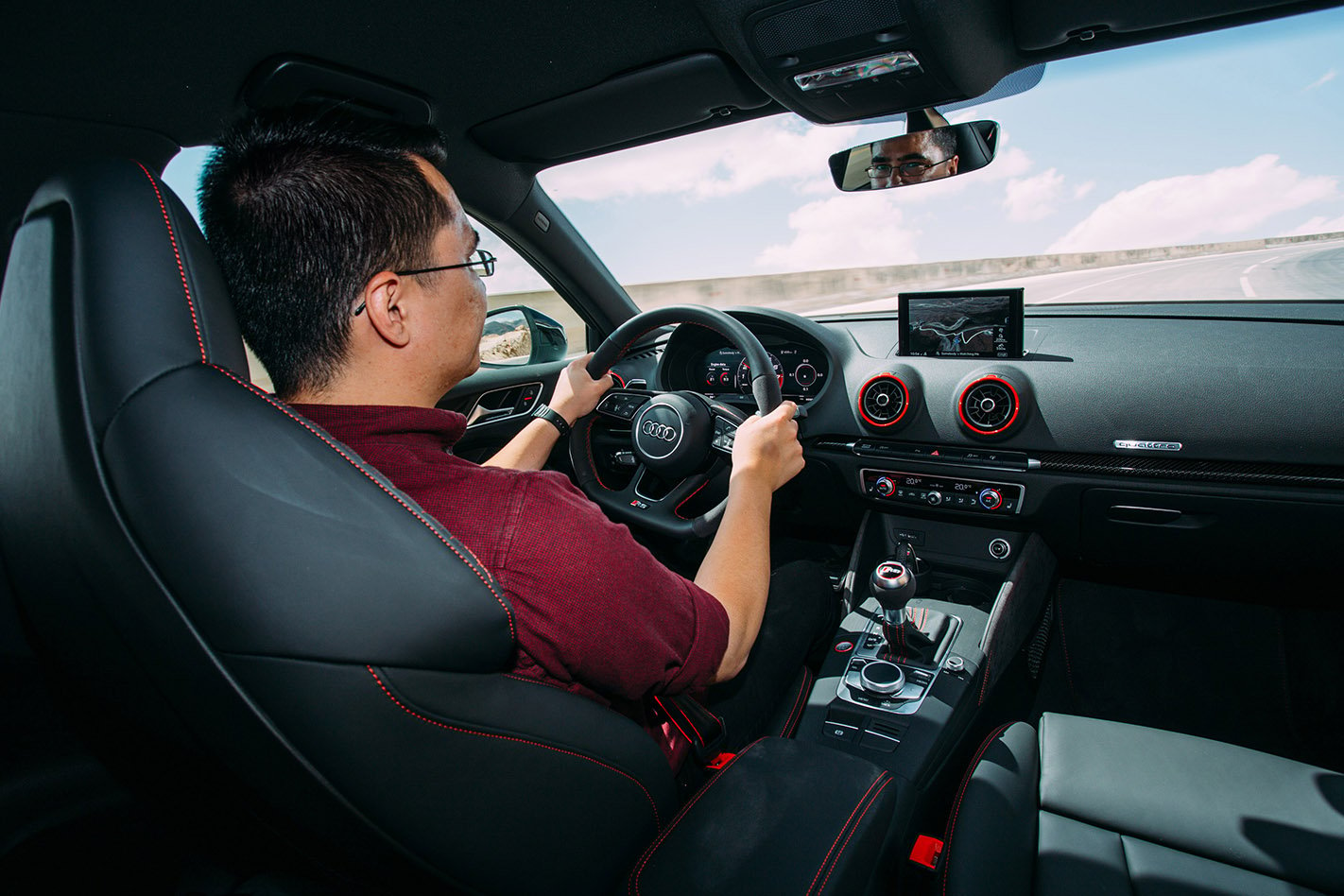
ANY RIVALS I SHOULD CONSIDER?
The chief competition for the Audi RS3 sedan is the Mercedes-AMG CLA45. With 280kW, 475Nm, AWD underpinnings, four doors and a dual-clutch gearbox, it’s the closest match by far. It’s a tenth of a second slower to 100km/h, however, and with a starting price of $88,798 it’s a more expensive option. The RS3 sedan is expected to cost in the low $80k region.
A left-field rival is the Infiniti Q50 Red Sport, which comes from a size category above the RS3 yet lines up well with a 3.0-litre twin turbo V6 that generates 298kW and 475Nm. Performance isn’t as sharp thanks to the Infiniti’s bulk, but it has the practical advantages of being a bigger car.



